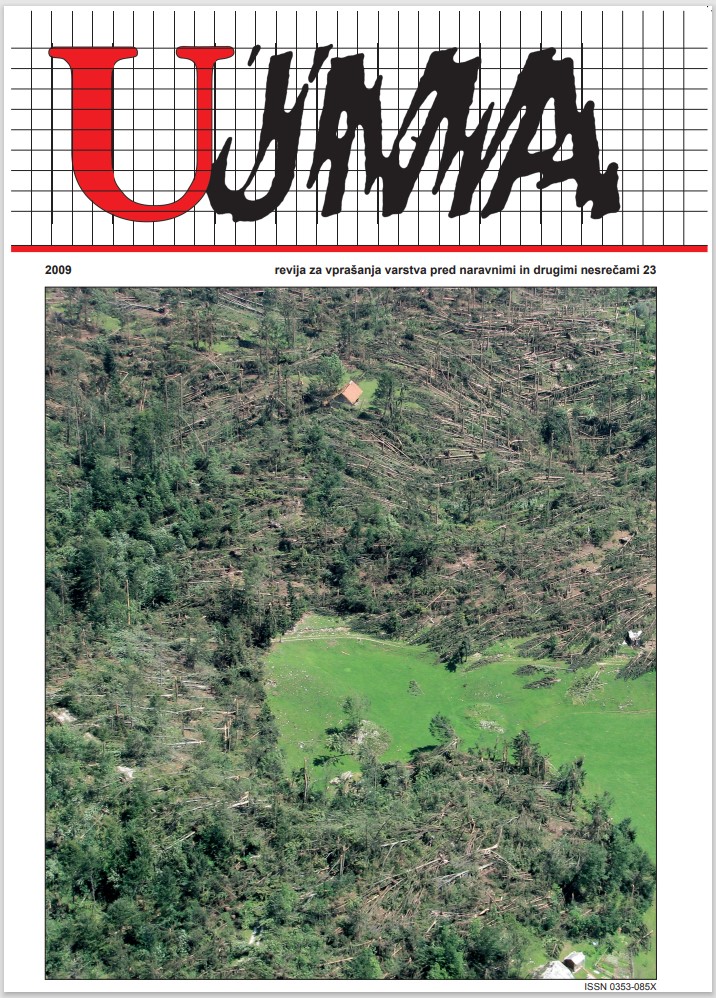PROJEKT NATO SfPS: OCENA POTRESNEGA OJAČENJA TAL IN RANLJIVOSTI STAVB V MAKEDONIJI, HRVAŠKI IN SLOVENIJI
Povzetek
V projektu programa NATO Znanost za mir in varnost z naslovom Ocena potresnega ojačenja tal in ranljivosti stavb v Makedoniji, Hrvaški in Sloveniji (2005—2008) smo z metodo mikrotremorjev raziskovali vpliv lokalne geološke zgradbe na potresno nihanje tal in ranljivost stavb. Ta metoda omogoča določitev lastne frekvence mehkih sedimentov, ki so odloženi na skalni podlagi, in dveh glavnih frekvenc nihanja stavb. Na ta način lahko ugotovimo nevarnost resonance med tlemi in objekti, ki lahko ob potresu poveča poškodbe. Metoda mikrotremorjev omogoča količinsko potresno mikrorajonizacijo urbanih območij. V Sloveniji so raziskave potekale na območju Ljubljane, Bovške kotline in Ilirske Bistrice. V okviru projekta smo organizirali mednarodno delavnico Povečanje potresne varnosti s povezovanjem inženirskih tehnologij in seizmoloških podatkov in izdali knjigo pri založbi Springer. Rezultati projekta bodo objavljeni v posebni številki revije Bulletin of Earthquake Engineering.
Literatura
Bard, P. Y., 1999. Microtremor measurements: a tool for site effect estimation? V: Irikura, K., Kudo, K., Okada, H., Sasatami, T. (ur.): The effects of surface geology on seismic motion. Balkema, 1251—1279.
Gosar, A., 2007a. Microtremor HVSR study for assessing site effects in the Bovec basin (NW Slovenia) related to 1998 Mw5.6 and 2004 Mw5.2 earthquakes. Engineering geology, 91, 178—193.
Gosar, A., 2007b. Raziskave vpliva lokalne geološke zgradbe na potresno nihanje tal in ranljivosti objektov z mikrotremorji. Geologija, 50/1, 65—76.
Gosar, A., 2008a. Site effects study in a shallow glaciofluvial basin using H/V spectral ratios from ambient noise and earthquake data; the case of Bovec basin (NW Slovenia). Journal of Earthquake Engineering, 12, 17—35.
Gosar, A., 2008b. Raziskave resonance med tlemi in stavbami v Bovški kotlini z metodo mikrotremorjev. Ujma, 22, 17—178.
Gosar, A., Martinec, M., 2009. Microtremor HVSR study of site effects in the Ilirska Bistrica town area (S. Slovenia). Journal of Earthquake Engineering, 13, 50—67.
Gosar, A., Rošer J., Šket-Motnikar, B., Zupančič, P., 2009. Microtremor study of site effects and soilstructure resonance in the city of Ljubljana (central Slovenia). Bulletin of Earthquake Engineering (v tisku).
Gosar, A., Lenart, A., 2009. Mapping the thickness of sediments using microtremors in the Ljubljana Moor basin (Slovenia). Bulletin of Earthquake Engineering (v tisku).
Mucciarelli, M., Herak, M., Cassidy, J. (ur.), 2009. Increasing seismic safety by combining engineering technologies and seismological data. Springer, NATO science for peace and security series C. Environmental security, 382 str.
Mucciarelli, M., Gallipoli, M. R., Šket-Motnikar, B., Zupančič, P., Gosar, A., Prevolnik, S., Herak, M., Stipčević, J., Herak, D., Milutinović, Z., Olumceva, T., 2009. Empirical estimates of dynamic parameters on a large set of European buildings. Bulletin of Earthquake Engineering (v tisku).
Nakamura, Y., 1989. A method for dynamic characteristics estimation of subsurface using microtremor on the ground surface. Q. R. Railway Tech. Res. Inst., 30, 25—33.
SESAME, 2004. Guidelines for the implementation of the H/V spectral ratio technique on ambient vibrations: measurements, processing and interpretation, 62 str., http://sesame-fp5.obs.ujf-grenoble.fr/Delivrables/Del-D23-HV_User_Guidelines.pdf
Prenosi
Objavljeno
Številka
Rubrike
Licenca

To delo je licencirano pod Creative Commons Priznanje avtorstva-Nekomercialno-Brez predelav 4.0 mednarodno licenco.
Članki so na voljo javnosti pod licenco Creative Commons Priznanje avtorstva-Nekomercialno-Brez predelav 4.0 Mednarodna (CC BY-NC-ND 4.0).


